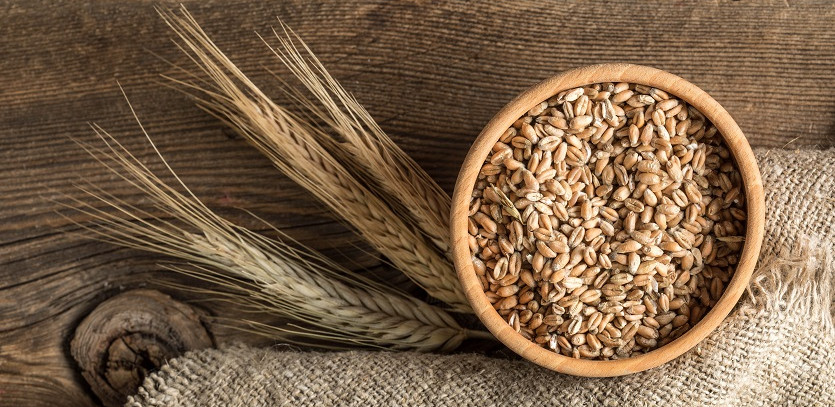Main events
The global production forecast for all grains (wheat and coarse grains) in 2022/23 has been raised by 2 million tons month-on-month (m/m) to 2252 million tons, primarily due to an increase in wheat. The consumption forecast has risen by 3 million tons, primarily driven by a higher demand for wheat, with end-of-season reserves increasing by 1 million tons. The Council has slightly revised its trade estimate upward, considering stronger-than-expected corn shipments.
For the 2023/24 season, the all grain production forecast has been increased by 7 million tons from the previous month to 2,291 million tons, resulting from higher corn and barley production. While the increase in supply is mostly offset by increased use, primarily in the feed sector, there is still an upward forecast for end-of-season stocks at 581 million tons. Total trade has been revised downward month-on-month due to reductions in wheat, corn, and sorghum.
Global soybean production estimates remain unchanged month-on-month, following adjustments for South American producers. The carryover stocks forecast has been increased by 2 million tons month-on-month, owing to a further decline in consumption, and a slight increase in trade estimates. The 2023/24 production forecast has been raised by 2 million tons, with higher supply also supported by increased early season stocks, leading to higher utilization and reserve projections. Trade is projected slightly above month-on-month at 174 million tons (+3%).
Rice trade in 2023 (January/December) is anticipated to be slightly above month-on-month, reaching almost 53 million tons, due to potential large shipments to Indonesia. The 2023/24 outlook remains mostly unchanged since March, with a slight decrease in early-year inventories and end-season total reserves downgraded marginally month-on-month to 174 million tons, an increase of 2 million tons year-on-year (y/y). Trade volume increase expectations remain unchanged.
The IGC Grains and Oilseeds Index (GOI) has decreased 3% month-on-month, primarily due to declines in most constituents (excluding rice), and is now more than 20% lower than a year ago.
General information
With varying trends, the 2022/23 production of all grains (wheat and coarse grains) is estimated at 2,252 million tons, a 2% y/y decrease, as a decline in corn (-71 million tons) and sorghum (-3 million tons) is outweighed by gains in wheat (+22 million tons), barley (+8 million tons), and oats (+4 million tons). Despite overall demand weakening (mainly for corn), a relatively sharper decline in supply implies that stocks are expected to fall for the sixth consecutive year to 584 million tons (-2%).
Primarily driven by a strong recovery in maize crops, the 2023/24 grain production is forecast to reach 2,291 million tons (+2%), roughly equal to the 2021/22 record. Total use is anticipated to rise to 2,293 million tons, with a 1% y/y increase aligning with the average. Due to some contraction in wheat, global stocks could slightly decline to 581 million tons, potentially the lowest level since 2014/15. Total trade is predicted to decrease for the third consecutive year to 407 million tons (-1%).
The 2022/23 global soybean production is projected to expand by 4% y/y, as the massive Brazilian crop more than compensates for declines in other regions. While some key consumers are expected to see record consumption levels, a sharp decrease in Argentina
(despite significant imports) suggests that usage will stay stable y/y at 366 million tons. Trade is expected to expand significantly (+8% YoY). With anticipated growth in the top three exporters, a record global harvest is projected for 2023/24, with overall usage reaching a new peak driven by growth in Asia and the Americas. Inventory accumulation is expected, with trade likely hitting a new peak.
Global rice production in 2022/23 is projected to decrease by 6 million tons y/y, reflecting declining crops in Asia and the Americas. Although consumption is also expected to slightly decrease, stocks could contract, largely due to their lower levels at the start of the season. The 2023/24 outlook suggests a recovery in global production to a new peak, linked to potentially larger harvests in Asian producers. While the expansion of food demand should lead to an overall increase in consumption, a larger harvest will still allow some increase in stocks, including in the largest exporters. Trade is projected to rise by 1 million tons y/y due to demand from African countries.
Global demand for lentils in 2022/23 is expected to recover robustly, with trade estimated at 4.3 million tons (4.1 million tons), reflecting stronger demand in Asia. With potential improvements in Canada and India, global production in 2023/24 is projected to be around 5% higher y/y. Given the anticipated growth in consumption, trade volumes may slightly decline.
Market overview
Primarily influenced by lower average export prices for soybeans, along with weaker barley, wheat, and corn quotations, the IGC GOI Index fell 3% to its lowest level in almost 16 months at the end of March.
With most export prices weakening in April, the IGC GOI wheat sub-index has declined a net 2% over the past five weeks, falling 29% y/y.
The IGC GOI corn sub-index fell 1% m/m. While prices rose in the US (partly thanks to renewed demand from China), quotations in Ukraine and Argentina fell overall.
Mainly due to stronger Indonesian demand, the IGC GOI rice sub-index edged up 3% month-on-month, with net gains across Asia.
The IGC GOI soybeans sub-index fell by a net 5% as export quotations weakened in South America, particularly in Brazil.





